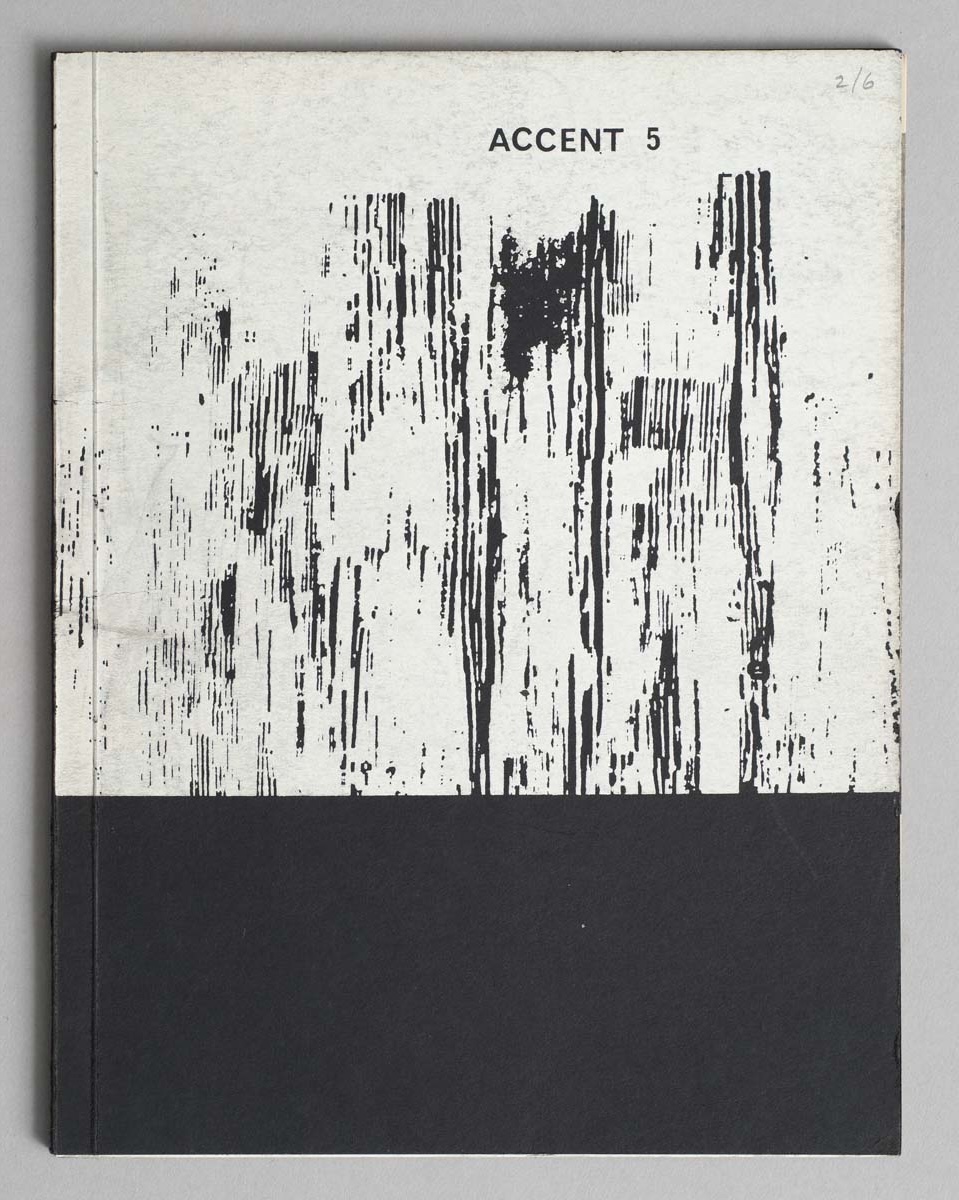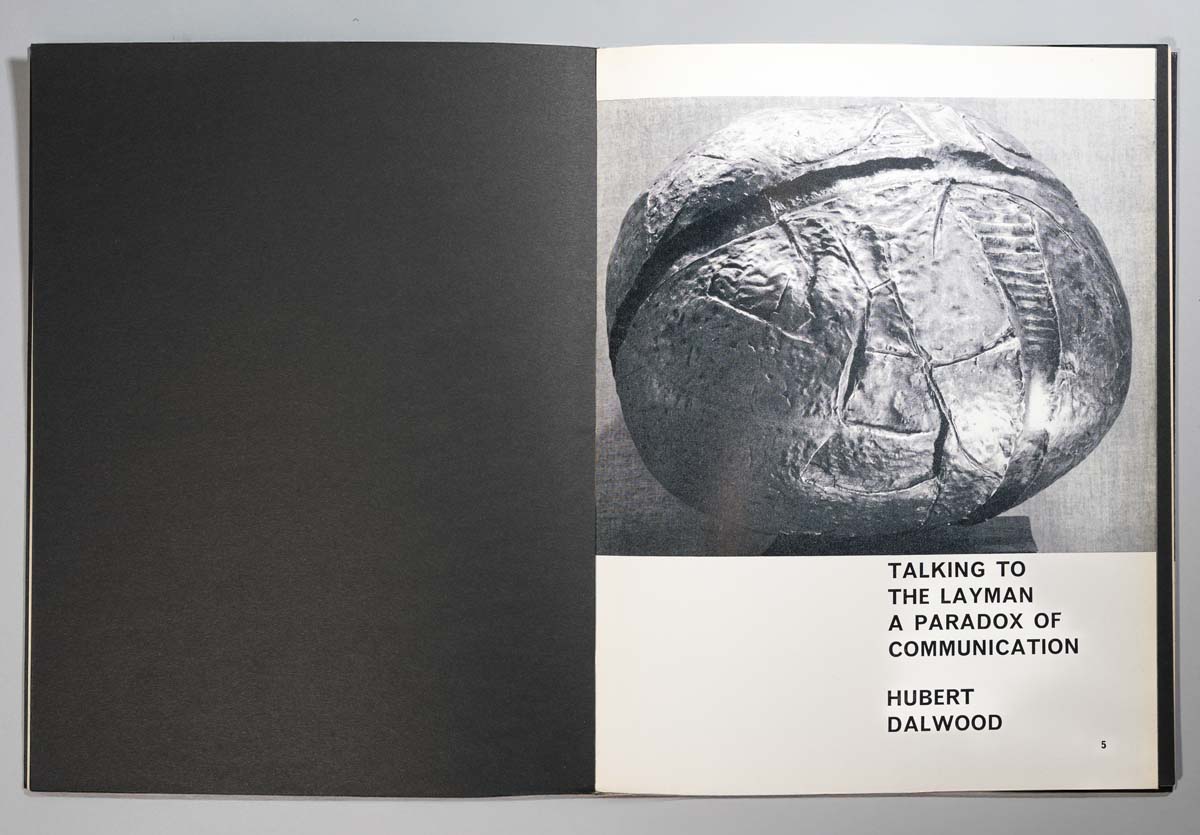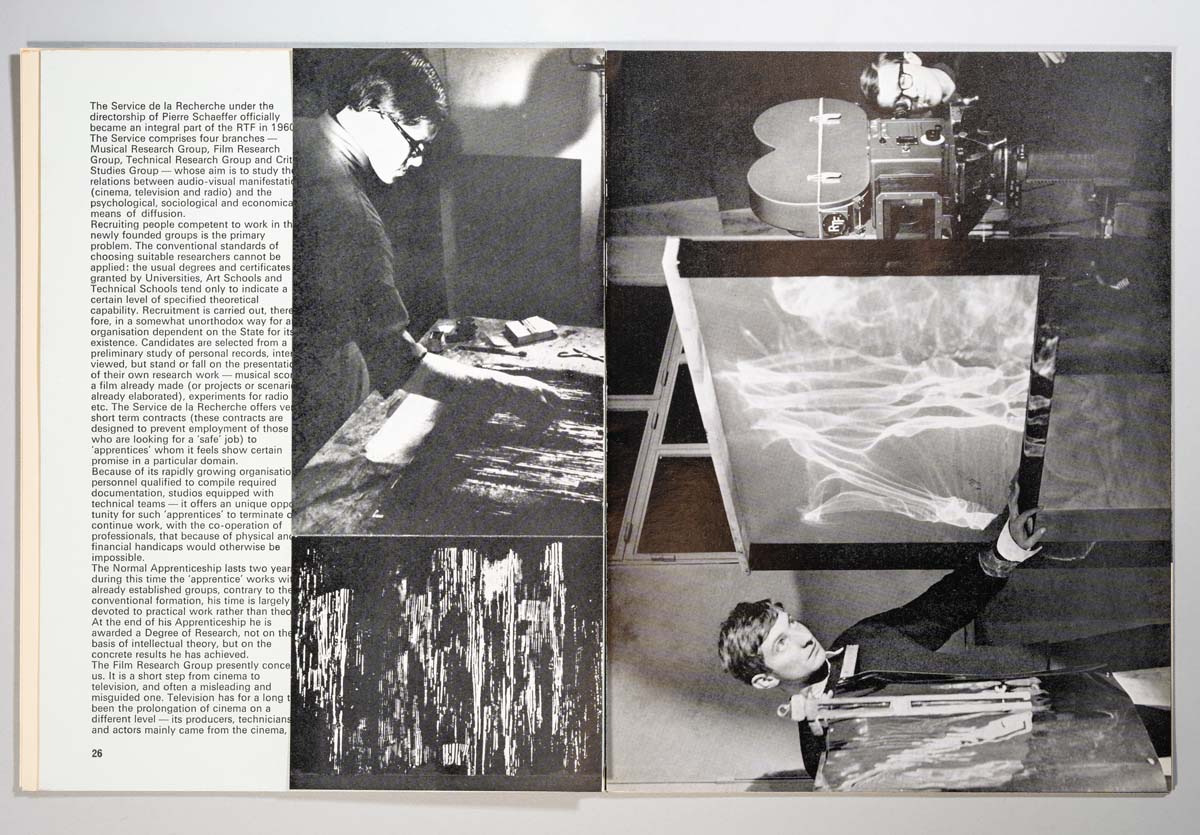 Image: Accent 5, 1962
Image: Accent 5, 1962
Issue five begins with an editorial by Jose Cheeseman, which is concerned with the communication of art to the masses and the struggles in achieving this. It serves as an introduction to the first article, 'Talking to the Layman: A Paradox of Communication', by Hubert Dalwood, a sculptor who, from his own experience as an artist, describes his personal assessment of the reasons for these difficulties. Next, Eric Atkinson, then Principal of Leeds College of Art, contributes an article on the self-taught artist and mariner, Alfred Wallis, who Atkinson argues holds an important place in the development of 20th century art due to the “simple unity” (Accent 5, p. 14) of his works, making them “both personal and significant in universal values.” (ibid).
 Image: Article by Hubert Dalwood
Image: Article by Hubert Dalwood
'Suicidal Swarming City', a poem accompanied by photographs both by Ralph Wallis, paints a picture of deprivation for the young and old whose loss of quality of life and security is supposed to be soothed by the chance to see “Brigitte Bardot at the pictures.” (Accent 5, p.19) 'New Films for the Tele' by Anne Head discusses work by those at the vanguard of publicly funded experimentation and research into the possibilities of film and television and how their consumption might be more widely diffused. In 'A Tradition of Craftsmanship', Paul Browns argues heartily for a reconfiguration of approaches to the execution and teaching of crafts, insisting on a turn away from “a tradition of fine craftsmanship” (Accent 5, p38) and to a focus on the renewed exploration of each craft’s relevance to the material realities of contemporary life.
 Image: Article by Anne Head
Image: Article by Anne Head
All of these articles look at the character of the creative industries’ relationship with the multitudes of people who are not primarily concerned with professional production of art and craft but for whom art is nonetheless essential to daily existence; in some cases, the articles consider how the apparent divides might be bridged.
Third year BA (Hons) Creative Writing student, Maya Nagra, has written a poem mirroring 'Suicidal Swarming City'.
Maya Nagra
Third year BA (Hons) Creative Writing
That Terrible Place
 Image: Poem and photograph by Ralph Wallis
Image: Poem and photograph by Ralph Wallis
Suicidal. Swarming.
A city dissolved
into olive ash and sky.
Watch.
Watch.
As the bones
of buildings
bow underneath
ceaseless fists.
Tender roots turn
to dust
and shadows
the only things that
still move.
Homeless bodies
of the chaos.
Age surpasses youth.
Laughter is lost
in the land
like a choke.
A pulse is not
a beating heart,
they mouth,
as their grip slips
from them like
poisoned ink
into water.
Shall we paint
our eyes
with coloured
chalk,
Red White and Green,
And pray
our distance
gives us foresight?
But still
hungry hands
build rivers of tables.
Where dusty fingers
Break sacred bread,
And sweep away the rubble
so that flowers
might sprout
Once more.
That terrible place.
Nevermind.
Nevermind.
Rationale
“My angle was to think about cities or places that have been portrayed to seem the way the speaker in the original poem is talking about their own city. I chose to use the Gaza strip as my inspiration. The west, specifically and more recently America, have portrayed Gaza as this place of devastation, a place not worthy of being proud of or seen to be beautiful. Even though it is mainly western countries and bordering countries with ideologies that align with the west that are responsible for the desolation of that city.” – Maya Nagra